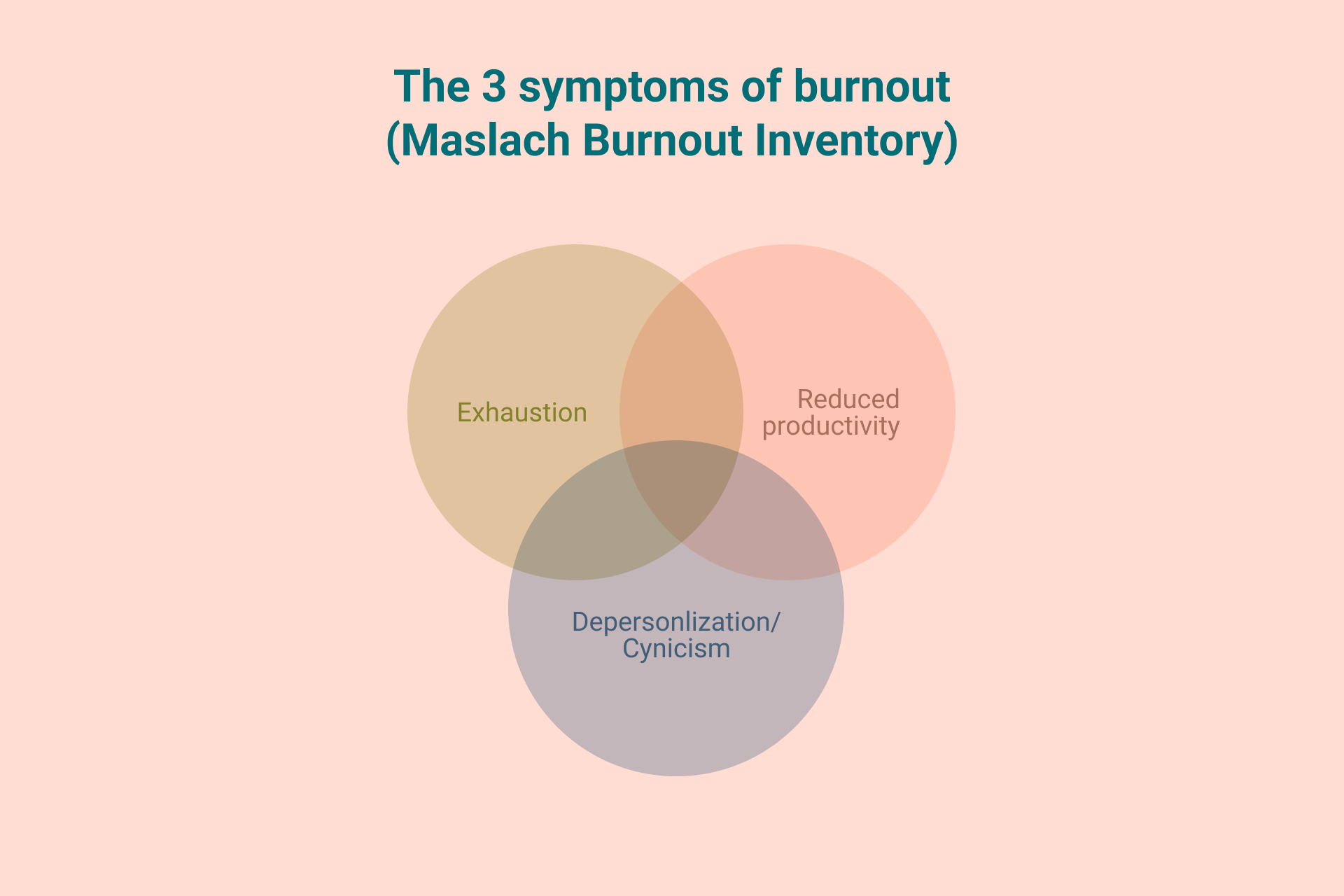3 symptoms of burnout: the Maslach Burnout Inventory method
Note: this article explores Burnout signs and symptoms. Expand your insights with these additional resources:
Hear stories from people who have burned out
Explore how working with a Burnout coach can help
Take this 8-minute Burnout survey, which can give you insight into navigating your own burnout
What is burnout?
Signs of burnout can manifest in many different ways, depending on the context, but some of the following are common signs of burnout:
Exhaustion
Irritation
Pessimism
Anxiety
Numbness
Headaches
Reduced creativity
Diminished cognitive functioning
Depression
Withdrawal
Listlessness
Insomnia
From my research as a burnout coach into the realities of individuals who have experienced a work burnout (or multiple), here are some of the ways people have described their own signs:
“A loss in purpose, focus, and energy.”
“When you have an overwhelming feeling of not getting enough done nor ability to get caught up.”
“A breaking point, can be any combination of physical/mental/emotional where you can no longer execute the day-to-day that is expected of you.”
When it comes to officially diagnosing burnout, there are many different ways to do so, but the Maslach Burnout Inventory (MBI), developed in 1981, is the most commonly used scientific method to officially define burnout. The MBI assesses an individual’s overall level of burnout according to 3 categories of symptoms:
Exhaustion — exhaustion, particularly with regard to emotional exhaustion is a big indicator of burnout. It refers to being overextended by your work, beyond your capacity and without sufficient rest opportunity to replenish your emotional/mental/physical energy stores.
Reduced productivity / professional efficacy — when your effectiveness at work shows signs of significant and persistent decline, this is also a key symptom that you may be burned out. Increases in your level of procrastination, avoidance, or distraction from work may also play a role in flagging reduced productivity.
Depersonalization / cynicism — this symptom refers to your attitude towards work. When you feel defeatist, despairing or demoralized by your work, the work demands, your colleagues, or the organization you work for, then consider this is a symptom of burnout, too. The symptom of depersonalization can also mean falling into an automatic, robotic, unfeeling mode at work.
Especially if you once felt energized by or passionate about your work, when you begin experiencing the “Sunday Scaries” or doubting the reason for which you are doing your work anymore in conjunction with the other 2 symptoms, you very likely may be burnt out.
While a temporary worsening in any of the above may be due to the normal rhythms of life (e.g. an upcoming pressing work deadline or meeting, a night of poor sleep, a passing source of stress outside of work), if these symptoms begin to show up on a consistent basis each week and even more so every day of work, then you are at risk of or have already entered some level of burnout.
Another means of assessing burnout is the 12 stages of burnout, developed by the psychologist who originally coined the term “burnout” in the first place.
If these 3 symptoms or any other of the above symptoms sound familiar, then please: take these symptoms seriously. Burnout can ruin lives and last for months and even years, and if changes in your life aren’t made to address it, burnout can also reoccur.
Burnout is a serious and complex issue, and everyone’s recovery journey is different. Continue your recovery with these additional steps:
Start the free, self-guided 3-week recovery plan
Read stories from people who have burned out discover burnout resources at LearnAboutBurnout.com
Explore how working with a Burnout coach can help
Take this confidential self-assessment to evaluate your current level of burnout
